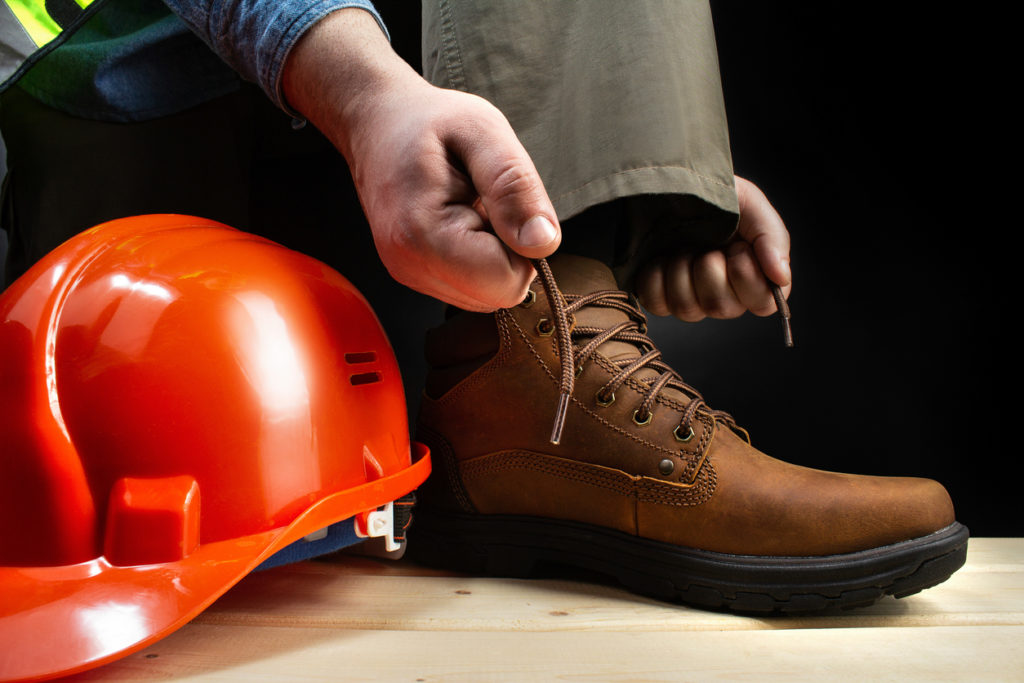When people think about workplace injuries they often think of back injuries from poor lifting techniques, broken legs, arms hands etc from falls from height or eye injuries from lack of proper eye protection.
However, 12% of all workplace injuries each year are attributable to a different body part…..
…The foot.
Each year according to statistics from the HSE these 15,000 separate foot injuries, Of which over 5,000 are rated “major incidents” cost the Uk Labour market over 30,000 days or on average 240,000 lost hours of labour due to absence related to foot injuries.
To protect workers and employers from the pain of foot/ankle injuries it is recommended that, where practicable, or where the law requires, such as the catering industry for example, employers provide appropriate safety footwear for their employees but in essence we all have a responsibility for our own personal safety and should ensure that whether our safety footwear in provided by our employer or we provide our own that it is suitable for the job we are doing.
For Example, In the construction industry footwear must be puncture resistant and have a steel toe cap and When working with electricity, employees/workers must have safety footwear with non-conductive soles, while in the catering industry footwear with non-slip soles are a requirement of the HSE directive.

In the Uk over the last Five years or so The construction industry in particular has really tightened up on workers and sub-contractors wearing appropriate safety footwear at all times and it is now mostly impossible to work on a building site anywhere in the UK unless you have the correct safety footwear and equipment. This is an example of an industry that has taken a strong and proactive step towards reducing foot related injuries in the workplace through the provision of or insistence that the correct and appropriate protective footwear is worn at all times but this is something we all should be working towards, whether it be for ourselves or our employees.
Here are a few of the features employers should look for when investing in safety footwear:
Steel Toe cap:
Perhaps the most common safety feature of safety shoes and boots , the steel toe can help protect employees from injuries from objects fallings and heavy pressure on the front of the foot.
When selecting steel-toe cap safety footwear look for a brand that provides protection for the entire width and length of the toes.
Metatarsal Guards:
Metatarsal guards protect the metatarsal bones and toe area from heavy falling objects
The metatarsals are delicate bones located at the top and bottom of the foot. These bones form the framework for the arches of the feet.
Shoes can be purchased with these guards built in or employers can purchase separate metatarsal guards, which are attached to the outside of the work boot.
Slip/Puncture resistant soles:
Next to the steel toe the slip and puncture resistant sole is a must have for workers.
These soles prevent two of the most common foot/ankle injuries, nails punctures and slips. Boots are available for purchase that combine both these features or an employer can buy puncture proof insoles to add to existing work boots.
Non Synthetic Materials:
Select footwear made of non-synthetic materials.
Footwear made from leather or canvas reduces the risk of sweaty feet, athlete’s foot and other foot fungi, especially when working in hot weather. Avoiding sweaty feet also helps the boot fit snug and prevents slips and ankle twist.
To further prevent sweaty feet, encourage employees to wear white cotton or wool socks, which can help prevent rashes, itching and other foot problems. If an employee still suffers from sweaty feet have them bring two pairs of socks to work and switch them midway through the day.
Comfort and Fit:
Poorly fitting safety footwear can lead to immediate foot problems like corns, blisters, twisted ankles and stubbed toes. In the long term, poorly fitting footwear contributes to problems such as fallen arches, and misaligned bones.
To avoid poorly fitting footwear it is best to have your feet measured or failing this ensure that your safety footwear fits snugly but does not rub when you try them on for the first time, if the size and fit isn’t right exchange them for a more comfortable fitting size.
The footwear you select should allow free movement of the toes, and fit snugly at the heel.
Employers and workers alike however should Remember that protective footwear is designed to protect the worker in the event of an accident, not to prevent accidents. Therefore it’s important to Make sure employees are extremely cautious of their feet when working around heavy equipment, material stockpiles, and while placing or moving heavy loads and that they don’t become complacent just because they are wearing protective footwear, vigilance against risks to feet will always provide better protection than the safety footwear itself, but just in case something does happen, it’s best to keep your feet covered with the right safety footwear.
This article on Safety Footwear was brought to you By www.justsafetyfootwear.co.uk

